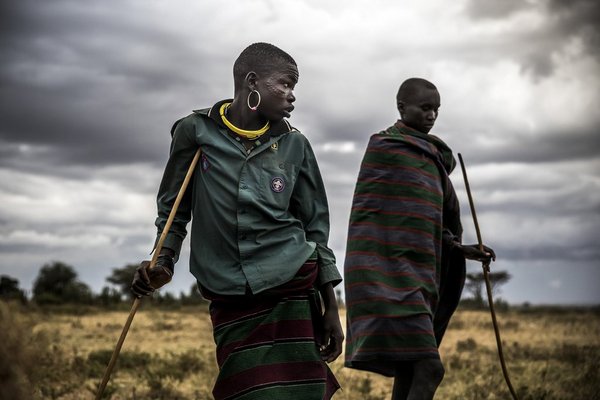 Read this article in French
Read this article in French- Share this article
- Subscribe to our newsletter
Over one billion people could be displaced by 2050
More than one billion people are threatened to be displaced by 2050 due to environmental change, conflict and civil unrest, warns the Ecological Threat Register (ETR) published by the Institute for Economics & Peace (IEP) in September 2020. The ETR measures the ecological threats countries are currently facing and provides projections to 2050.
Sub-Saharan Africa, South Asia, the Middle East and North Africa are the regions facing the largest number of ecological threats. 19 countries with the highest number of ecological threats are among the world’s 40 least peaceful countries including Afghanistan, Syria, Iraq, Chad, India and Pakistan, showing the strong relations between ecological threats and conflicts.
Many of the countries most at risk from ecological threats are also predicted to experience significant population increases, such as Nigeria, Angola, Burkina Faso and Uganda. These countries are already struggling to address ecological issues. They already suffer from resource scarcity, low levels of peacefulness and high poverty rates.
More than half of the world’s population likely to face high water stress
Over the past decade, the number of recorded water-related conflict- and violent incidents increased by 270 per cent worldwide. By 2040, a total of 5.4 billion people – more than half of the world's projected population – will live in the 59 countries experiencing high or extreme water stress, including India and China.
Over one billion people live in 31 countries where the country’s resilience is unlikely to sufficiently withstand the impact of ecological events by 2050, contributing to mass population displacement.
Dramatic increase in food insecurity
The lack of resilience in countries covered in the ETR will lead to worsening food insecurity and competition over resources, increasing civil unrest and mass displacement, exposing developed countries to increased influxes of refugees. 3.5 billion people could suffer from food insecurity by 2050; which is an increase of 1.5 billion people over today’s figure.
Creating conditions for mass displacement
More than one billion people live in countries that are unlikely to have the ability to mitigate and adapt to new ecological threats, creating conditions for mass displacement by 2050.
The country with the largest number of people at risk of mass displacements is Pakistan, followed by Ethiopia and Iran. Haiti faces the highest threat in Central America. In these countries, even small ecological threats and natural disasters could result in mass population displacement, affecting regional and global security.
Regions that have high resilience, such as Europe and North America, will not be immune from the wider impact of ecological threats, such as a significant number of refugees. The European refugee crisis in the wake of wars in Syria and Iraq in 2015 saw two million people flee to Europe and highlights the link between rapid population shifts with political turbulence and social unrest.
However, Europe, the US and other developed countries are facing fewer ecological threats and also have higher levels of resilience to deal with these risks. Developed countries which are facing no threats include Sweden, Norway, Ireland, and Iceland. In total there are 16 countries facing no threats.
(IEP/ile)
Read more at IEP website





Add a comment
Be the First to Comment